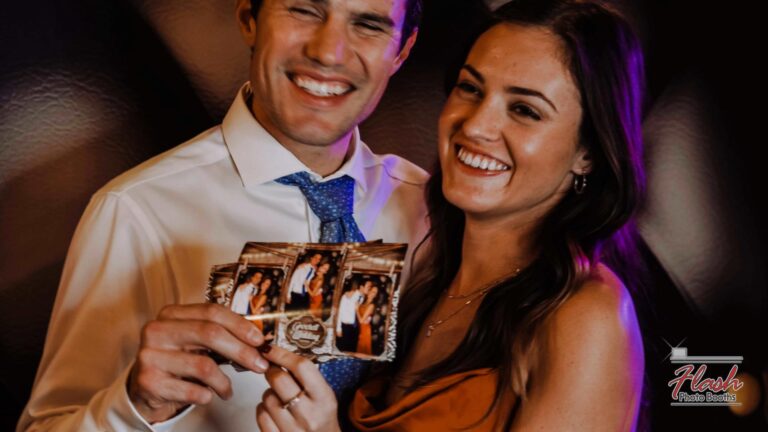A History of Photo Booths: From Passport Photos to Social Media
Introduction:
Photo booths have been a fixture in popular culture for over a century, providing a unique and accessible way for people to capture their likeness on film. From their humble beginnings as a tool for passport photos, to their modern-day use as a fun and interactive way to capture memories and share them on social media, the history of photo booths is a fascinating journey through time. In this guide, we’ll explore the history of photo booths, how they evolved over the years, and what their future may hold.
The Birth of Photo Booths
The first photo booth was invented by Anatol Josepho in 1925, a Russian immigrant living in New York City. Josepho’s photo booth used a camera and lighting system to take a series of photos in rapid succession, which were then developed in a darkroom inside the booth. The resulting photos were 8 inches by 10 inches, printed on high-quality paper, and cost 25 cents each. The photo booth was an instant success, with people lining up to have their portrait taken.
Josepho’s photo booth was not the first to use automatic cameras to take portraits, but it was the first to offer a fast and affordable service. Prior to the photo booth, people had to go to a photographer’s studio for a portrait, which was expensive and time-consuming. The photo booth made it possible for anyone to have their portrait taken quickly and easily, and at a fraction of the cost.
The Rise of Photo Booths
The popularity of photo booths continued to grow throughout the 20th century, with booths popping up in department stores, amusement parks, and train stations around the world. The 1930s and 1940s were the heyday of photo booths, with many famous faces, including Andy Warhol and Marilyn Monroe, having their portrait taken in a booth.
During World War II, photo booths were used to take passport photos for soldiers and civilians. The booths were set up in public places, and people could have their photo taken and receive their passport within a few hours. This made it much easier for people to travel, as they no longer had to visit a government office to have their photo taken.
.
The Decline of Photo Booths
Despite their popularity, photo booths began to decline in the 1950s and 1960s as color photography became more accessible and affordable. People began to prefer color photos over black and white, and photo booths struggled to keep up with the demand for color prints.
The rise of digital photography in the 1990s and 2000s dealt another blow to photo booths, as people could now take their own photos with digital cameras and smartphones. However, photo booths persisted, with companies innovating and updating the technology to keep up with the times.
The Resurgence of Photo Booths
In recent years, photo booths have experienced a resurgence in popularity, fueled in part by the rise of social media and the desire for unique and shareable content. Photo booths are now a popular feature at weddings, parties, and corporate events, providing a fun and interactive way for people to capture memories and share them with others.
The modern photo booth has come a long way since Josepho’s original invention. Today’s photo booths use digital cameras and software to capture and process images, with many offering a variety of features such as green screens, filters, and props. Some photo booths even offer the ability to share photos directly to social
media platforms, making it easy for people to share their photos with friends and family.
In addition to their popularity at events, photo booths have also become a fixture in public spaces, with photo booth installations popping up in cities around the world. These installations offer a fun and interactive way for people to capture memories and share them with others, while also providing a unique way for cities to engage with their residents and visitors.
The Future of Photo Booths
As technology continues to advance, the future of photo booths is bright. In recent years, we have seen the rise of 360-degree photo booths, which use multiple cameras to capture a 360-degree image of the subject. These photo booths offer a new level of interactivity and immersion, allowing people to capture and share truly unique and memorable photos.
Virtual reality and augmented reality are also beginning to make their way into the world of photo booths, with companies experimenting with immersive photo booth experiences that transport users to different worlds and environments.
The future of photo booths is not just limited to technology, however. With the growing trend towards sustainability and eco-friendliness, we may see photo booths that incorporate environmentally friendly materials and practices, such as using recycled paper for prints and energy-efficient lighting systems.
Conclusion:
From their humble beginnings as a tool for passport photos, to their modern-day use as a fun and interactive way to capture memories and share them on social media, the history of photo booths is a fascinating journey through time. While photo booths may have faced challenges over the years, they have persevered and adapted, remaining a beloved feature in popular culture.
As technology continues to evolve, we can expect to see even more exciting and innovative developments in the world of photo booths. Whether it’s 360-degree photo booths or immersive virtual reality experiences, photo booths are sure to continue to provide a fun and unique way for people to capture and share their memories for years to come.






